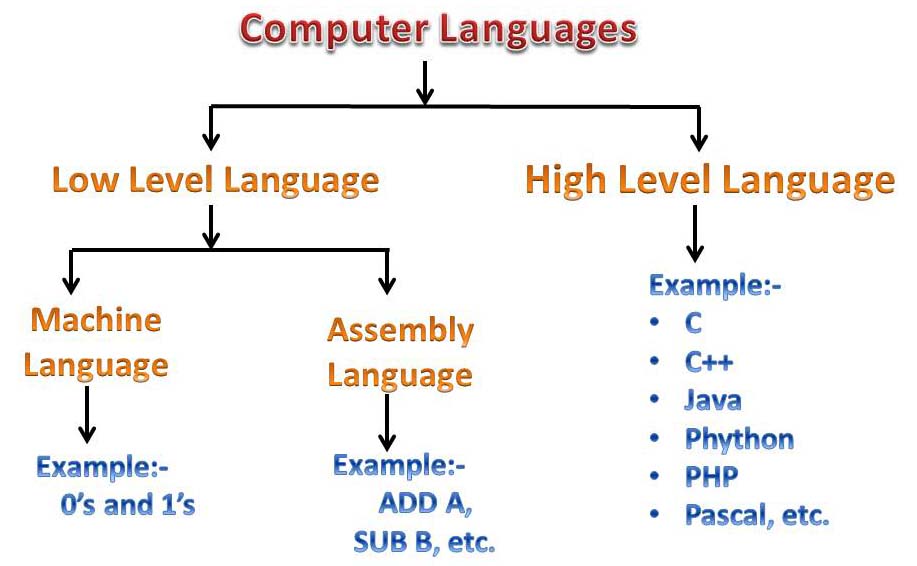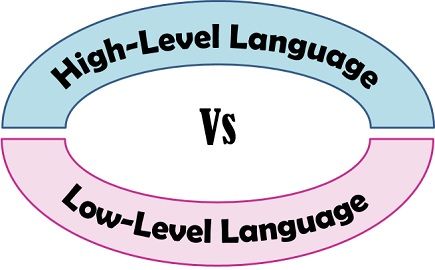A group of instructions that are used to create computer programs are known as computer languages. The main aim of these languages is to make human-computer interaction possible and easy

All humans and animals have their ways of communicating with each other. Humans have different languages such as Hindi, English, Telugu, etc, whereas animals communicate through their sounds and signals. We have been working on computers for decades now but have you ever wondered how do we communicate with them? Isn’t it kind of inquisitive?
Well, computers certainly cannot understand human languages so we cannot directly communicate with them. Hence, with time, we developed several languages which help us to convey our messages to computers and make them do our work. In this article, we have discussed all these computer languages and their types
What are Computer Languages
A group of instructions that are used to create computer programs is known as a computer language. The main aim of these languages is to make human-computer interaction possible and easy. We, humans, have invented these computer languages to make our work easier by making our tasks done by the computer
Types of Computer Languages
In this section, we will be learning about the types of Computer languages. There are mainly 4 different types of machine languages that are known to us, and the same have been discussed below for your reference
- Low-level computer language
- Machine-level language
- Assembly-level language
- High-level languages
Low-Level Language
A Low-level computer language consists of only 1’s and 0’s. First and second-generation computers were first built using this language. This type of language is easily understood by a computer, but it is very difficult for humans to understand this. These Low-level languages are specifically designed to interact with the computer hardware and are categorized into two types- machine-level language and assembly-level language
Machine-Level Language
Machine-level language is a type of Low-level language. This language is believed to be the oldest computer language. Computers tend to understand only the language of Digital Electronics, which deals with the presence and absence of voltages. 2 logics can play their role within the computer, which are-
- Positive Logic: In this, the presence of voltage is denoted by 1, and the absence of voltage is denoted by 0.
- Negative Logic: Here, the presence of voltage is denoted by 0 while the absence of voltage is denoted by 1
Computers can follow one of the logics at a time and not both simultaneously. A program can be written using only 0s and 1s to make the computer understand, and data can also be represented using only 0s and 1s. Such a program is called a Machine Language program. A computer can directly understand a program written in machine language; hence, a machine language program does not require any translator to convert from one form to another
Assembly Level Language
Assembly-level language was introduced with the advancement of machine-level language. This computer language uses symbols, which are popularly known as mnemonics in computer terminology, to write the instructions. Hence, writing a program in Assembly Level Language is more understandable to humans rather than machine-level language. In this language, symbolic names are used to denote addresses and data. The Assembly language code gets converted into Machine language code with the help of an Assembler for the computer to understand the binary-converted Assembly Language
High-Level Language
High-level languages are the advanced development languages in the evolution of computer languages. The main goal of these languages is to make programming easier and less error-free. These high-level languages use words and commands along with symbols and numbers. High-level programming languages are created to be more user-friendly and easier for humans to understand than Low-level languages. They use keywords similar to English words, making coding more intuitive. Here are some examples of High-Level Programming languages are-

- C
- C++
- Java
- Java Script
- Python
- C#
- PHP
Difference between High-Level and Low-Level Language
High-level languages and low-level languages are different from each other in many aspects. High-level languages are human-friendly, whereas low-level languages are programmer-friendly. High-level languages take longer to execute programs, while program execution time is less in low-level languages. Some more differences between the two languages have been tabulated below

| SL.NO | High-Level Language | Low-Level Language |
|---|---|---|
| 1 | High-level languages are easily understood by humans as they use English statements | Low-level languages are hard to understand by humans because of the usage of binary numbers, which can be easily understood by computers |
| 2 | These languages are human-friendly. | These languages are programmer-friendly |
| 3 | This takes a long time to be executed. | Program Execution time is less |
| 4 | These are simple to maintain. | These are complex to maintain. |
| 5 | Debugging is easy in High-Level languages | Debugging is hard in Low-level languages |
| 6 | Programs of High-level languages are portable, hence can be used on any computer | Programs in low-level languages are not portable |
| 7 | These languages are widely used in today’s technology | Low-level languages are not used in the prevailing technology |
Similarities Between High-Level and Low-Level Language
Purpose: Both High-level and Low-level languages are used to write programs that a computer can execute.
Logic and Flow: Both follow logical steps (sequence, selection, and iteration) to solve problems.
Translation Needed: Both languages require translation (compiler/interpreter for high-level, assembler for low-level) into machine code.
Control Structures: Both can use loops, conditionals, and functions (though low-level does this in a more manual way).
Used in Programming: Both are essential for software development and system programming.
Important Terms Used in Computer Language
Statement: A statement is telling a computer on how to do a desired action using words or instructions.
Syntax: Syntax is the structured arrangement of statements.
Algorithm: Algorithm is a set of instructions written to solve a problem. It is the logical thought process of a computer.
Binary Number: Binary numbers are a way of expressing data. The numbers 1 and 0 are called binary numbers. The computer can only understand binary language
Coding: Coding is the process of creating computer instructions. Computer codes are also called Programs